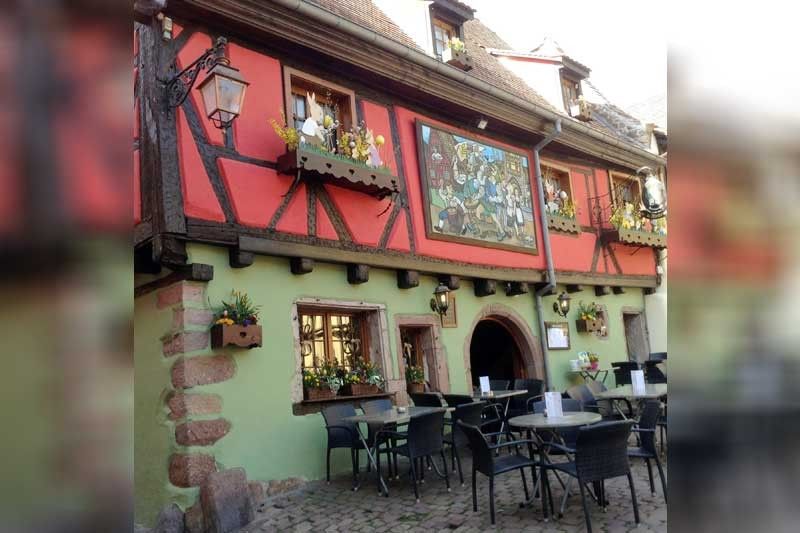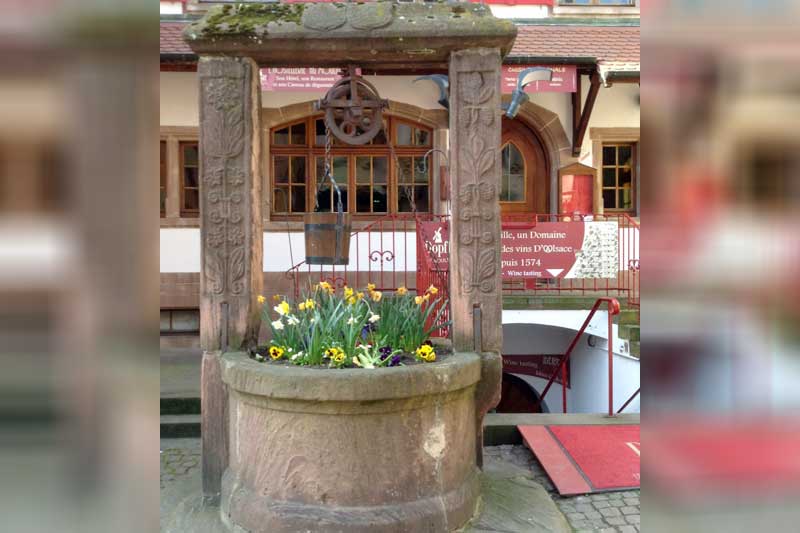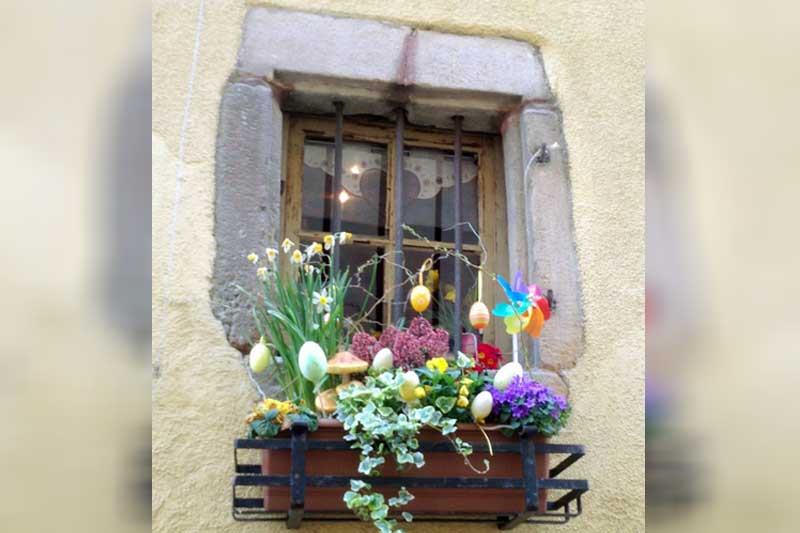Riquewihr: A Fairy Tale – Really!

MANILA, Philippines — Riquewihr claims to be the most beautiful village in France. And this is not an empty declaration.
Less than 2,000 inhabitants, with at least two protected sites and monuments, and having mass support of the town council – these are just some of the basic prerequisites to qualify for nomination for this coveted national competition. An intensive evaluation based on 27 different criteria by a panel of experts followed, who deemed that the hamlet exceeded all expectations.
Through the years, it continued to protect, preserve and promote the history, heritage and culture of the area, consciously avoiding converting it into a theme park or another soulless museum.
This accolade and many more just as prestigious were the inspirations behind the fairytale hometown of Belle, the lovable heroine of the box office classic Beauty and the Beast.
This is Riquewihr (pronounced as Ri-ke-veer), which has adopted the best of its foreign influencers – extended temporary visitors all – that included the Holy Roman Empire, Germany and France.

No fairy tale is complete without a centuries-old wishing well.
Nestled between two peaks of the Vosges Mountains in the Alsace Region in northeastern France, where vineyards stretch beyond what the eye can see, this little sleepy hamlet is known for its historical architecture, the genuine character of its community and its abundance of excellent wine.
We took a restful shade under the imposing Liberty Tree planted in 1792 – influenced by the example set by the Americans after their act of defiance against the British government – a symbol of the French Revolution, for an informative orientation from our guide.
We learned that the fortifications were built in 1291 by a succession of lords of Horbourg, who enjoyed a period of prosperity til the 16th century, through the active promotion and sale of their wines.
The 30-Year War (1618 to 1648) would sadly bring an end to its opulence, when various religious sects fragmented the neighboring states in a tug-of-war for power between France and the House of Habsburg, an influential and powerful ethnically German aristocratic family.
Close to the 18th century, Riquewihr, courtesy of the Treaty of Paris, aligned itself with the French Republic, where it has ever since remained an integral part.
“Remember, Riquewihr is an open-air museum. Go explore and discover its soul!” our guide encouraged.

A typical half-timbered architectural style
More steps brought us to the era of the Holy Roman Empire ruins and remnants, which has since been converted to a beautiful mini-garden. A vintage map which showcased the spots of interest greeted us.
Activity is centered on two main cobblestoned pedestrian streets sans vehicles, all lined with rows of houses seemingly attached to each other, three-stories-tall houses painted in different hues: serenity blue, pale yellow, rose quartz and viridian green, sporting their signature half-timbered architectural style. Word around says the abodes were dyed depending on the profession of its inhabitant, either baker or butcher, and the list goes on.
Likewise indicators of their guilds back then – some stuffed animals, metallic horseshoes, plus spares and remainders of other tools of the trade – were found on top of the arches of some residences which had prominent carvings of the year they were built.
We and wandered and wondered at public paintings with subjects on local folklore or Biblical tapestries on its façade, and gamely tried to decipher some ancient etched codes on the walls of certain establishments.
If that wasn’t enough, below the glass windows were flower pots in bloom, and images of celebrations such as bountiful harvests and momentous milestones. At eye level we were attracted to the neatly arranged pastel macaroons and decadent cakes and cookies prominently displayed in bakeshops and cafés.
The town square was flanked by mom-and-pop shops and small businesses featuring artisanal crafts, handmade items, panels of cross stitch and crocheted pieces, exquisite lace and meticulous art pieces lost in today’s fast-moving world.

Fully blooming flower boxes adorn the windows.
The Yuletide season never felt closer as we bumped into a huge Nutracker statue which stood guard at the Christmas Shop, a year-long celebration destination which contained a snowy recreation of the Alsatian village, a 4.5 meter-high Christmas tree and a varied selection of Christmas balls, gingerbread men, reindeer and ready-to-be-wrapped gifts.
Moving upwards led us to the Dolder Tower – the town’s iconic logo – a 25-meter former watchtower of pink sandstone and timber that alerted the residents of invaders’ attacks. It houses the local museum, which traces the locality’s history and its participation in the wars.
Upon our return, we noticed a passage with two churches – one Catholic, the other Protestant – at both ends of an alleyway with more shops, others with charming courtyards. It was a pleasant surprise at every corner!
Winstub, a popular winery, was our next stop, where we sampled supposedly the best Riesling in the world. We’ll drink to that!
Our terminus was the War Memorial of Riquewihr, which paid homage to resident-victims of both World Wars. On the way back to AmaDante – our floating hotel on the Rhine River – docked at the port, we admired the rows upon rows of grapevines that enveloped the hills. A fitting end to a truly magical place called Riquewihr.
- Latest
- Trending













